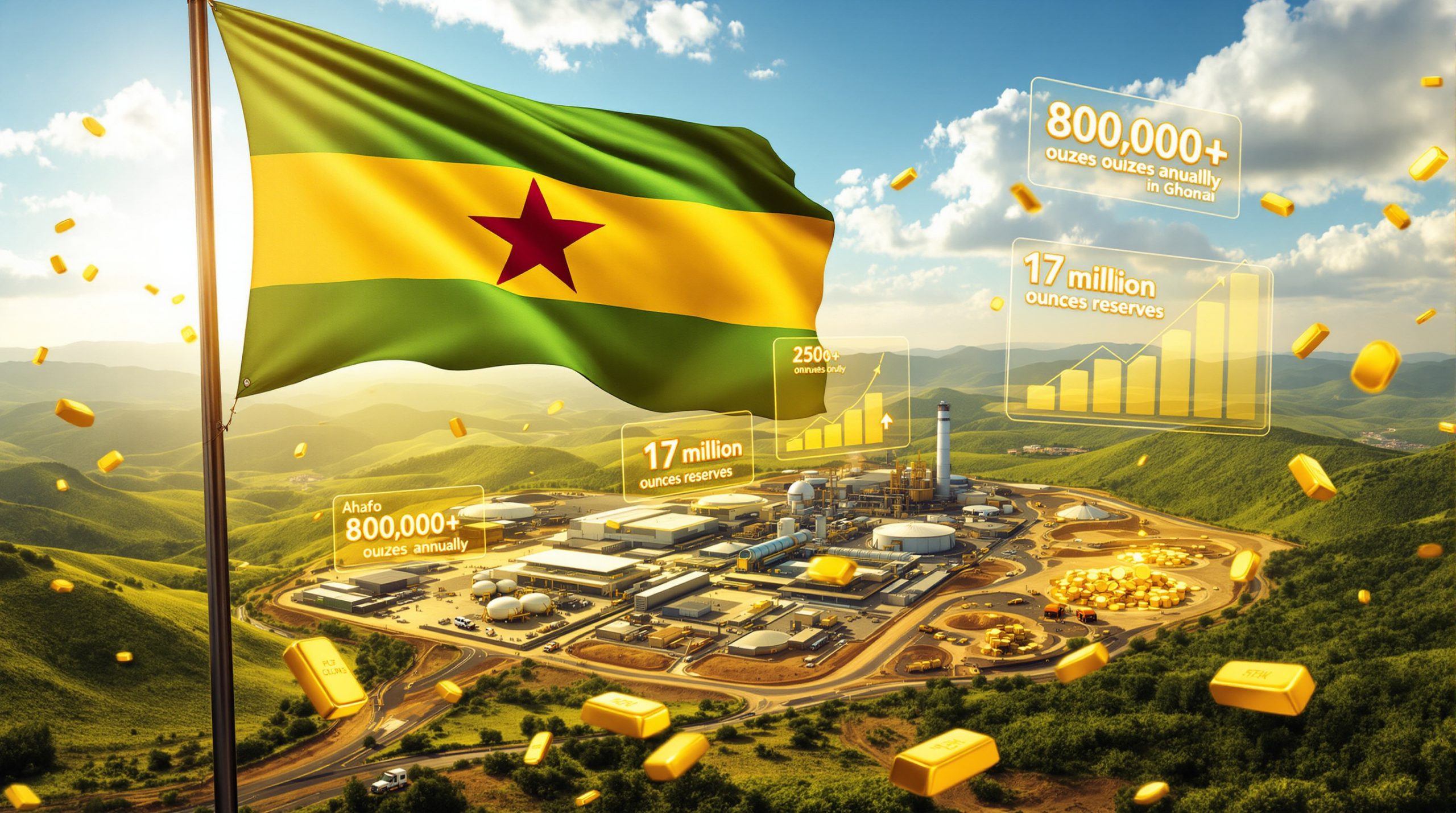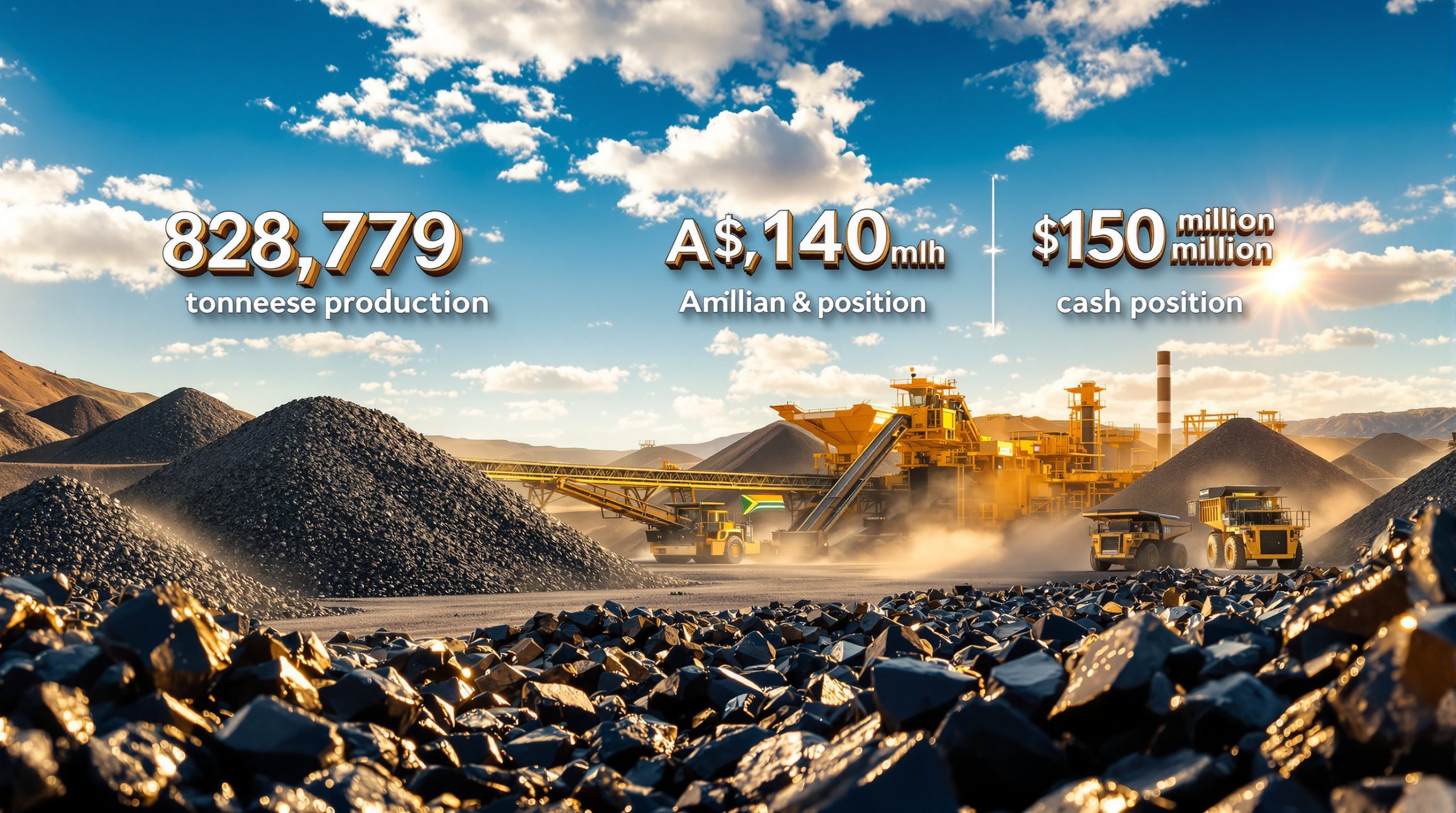Understanding the Strategic Importance of Graphite Creek Mine Alaska
Alaska's Seward Peninsula hosts what could transform America's approach to critical mineral independence. The Graphite Creek mine Alaska represents far more than a traditional mining venture, positioning itself as a cornerstone for reducing the nation's dependency on foreign graphite supplies that currently dominate global markets.
Located approximately 60 kilometres north of Nome, this deposit contains substantial graphite resources that could fundamentally alter U.S. supply chain dynamics. According to recent feasibility studies, the project envisions producing 175,000 tonnes of graphite concentrate annually over a projected 20-year operational period, making it potentially the largest domestic graphite operation in American history.
Citation: Mining Weekly, "Graphite Creek mine, US," 31 October 2025, Creamer Media
The strategic importance extends beyond raw production numbers. Current global graphite markets remain heavily concentrated in China, which processes approximately 70% of globally-traded graphite, creating significant supply chain vulnerabilities for American technology, defence, and clean energy industries.
Citation: U.S. Geological Survey, "Graphite," Mineral Commodity Summaries, 2024
Why Graphite Creek Matters for U.S. Energy Independence
The timing of this project aligns with federal priorities established through Executive Order 14017, which directed agencies to assess supply chain vulnerabilities in critical minerals including graphite. This policy framework creates supportive conditions for domestic graphite development, particularly as the nation transitions toward electrified transportation and renewable energy storage systems. Moreover, companies can benefit from understanding the permitting process insights when developing such large-scale projects.
Citation: The White House, "Executive Order on America's Supply Chains," 24 February 2021
Graphite serves essential roles in lithium-ion battery manufacturing, where it functions as the primary anode material. The U.S. Geological Survey designates graphite as a critical mineral, acknowledging its importance for both civilian technology applications and national defence systems. Furthermore, recent developments in battery recycling breakthrough technologies demonstrate the growing importance of sustainable graphite supply chains.
High-purity graphite also supports emerging technologies including artificial intelligence infrastructure and advanced manufacturing processes, making secure domestic supply chains increasingly vital for maintaining technological competitiveness. Additionally, AI in mining operations is revolutionising extraction and processing efficiency across the industry.
Location and Accessibility Advantages
The Seward Peninsula location provides several logistical benefits that distinguish this project from potential competitors. Proximity to the Port of Nome offers direct shipping access to domestic and international markets, while existing transportation infrastructure reduces development complexity.
The Port of Nome maintains year-round operations despite seasonal ice conditions, providing reliable access for equipment delivery during construction phases and eventual product shipment during operations.
Planned infrastructure includes a comprehensive access road system connecting the mine site to regional transportation networks, facilitating efficient movement of personnel, equipment, and materials throughout the project lifecycle.
How Does the FAST-41 Permitting Process Accelerate Development Timeline?
Graphite Creek mine Alaska achieved a significant regulatory milestone by becoming Alaska's first mining project accepted onto the federal FAST-41 permitting dashboard. This designation, established through the Fixing America's Surface Transportation Act of 2015, represents a fundamental shift in how major infrastructure projects navigate federal approval processes.
Citation: Mining Weekly, "Graphite Creek mine, US," 31 October 2025, Creamer Media
The FAST-41 framework addresses longstanding concerns about permitting delays that have historically discouraged domestic mining investment. By creating standardised timelines and enhanced agency coordination, this system reduces regulatory uncertainty while maintaining environmental protection standards. For comprehensive details about the project's regulatory status, visit Graphite One Inc. to learn more about their development progress.
Enhanced Coordination Between Federal Agencies
Traditional mining project approval involves multiple federal agencies operating with separate timelines and requirements. The FAST-41 system addresses this fragmentation by establishing a Federal Infrastructure Projects Coordinator who facilitates communication between permitting agencies.
Key advantages include:
• Unified timeline benchmarks that create accountability across agencies
• Public dashboard tracking that allows real-time monitoring of permitting progress
• Interagency coordination requirements that prevent duplicative reviews
• Transparent communication between project developers and regulatory agencies
Citation: Congress.gov, "H.R. 22 – Fixing America's Surface Transportation Act," 114th Congress, 2015
This coordinated approach represents a significant improvement over traditional permitting processes, where lack of communication between agencies frequently created delays and increased project costs.
Expected Permitting Timeline and Milestones
Current projections indicate environmental review completion by September 2026, with the U.S. Army Corps of Engineers serving as the lead permitting agency for Clean Water Act compliance and wetland impact assessments.
The environmental review process addresses multiple regulatory requirements:
• National Environmental Policy Act (NEPA) compliance through comprehensive Environmental Impact Statement preparation
• Clean Water Act Section 404 permitting for wetland and stream impacts
• Alaska State Environmental Policy Act (SEPA) requirements and state water quality certification
• Fish habitat protection standards under federal and state fisheries regulations
This integrated approach reduces timeline uncertainty while ensuring comprehensive environmental protection measures throughout project development. However, recent reports highlight ongoing challenges, as documented by the Alaska Beacon's coverage of tribal consultation requirements.
What Production Capabilities Will Transform America's Graphite Supply Chain?
The proposed operation represents a comprehensive approach to domestic graphite production, extending from raw material extraction through advanced processing capabilities. Annual production of 175,000 tonnes of graphite concentrate positions this project to supply substantial volumes for lithium-ion battery manufacturing and energy storage applications. This initiative directly supports Australia's critical minerals reserve strategy and similar global initiatives.
Citation: Mining Weekly, "Graphite Creek mine, US," 31 October 2025, Creamer Media
Beyond raw concentrate production, the integrated development strategy includes establishing processing facilities in Ohio that would convert concentrate into Anode Active Material (AAM) suitable for battery manufacturing applications.
Phased Development Strategy Reduces Financial Risk
The five-phase mining approach aligns capital expenditure with project milestones while reducing upfront financial commitments. This strategy begins with one year of prestripping before process facility startup, allowing operational learning from early phases.
Table: Graphite Creek Production Timeline
| Phase | Target Date | Production Capacity | Location |
|---|---|---|---|
| Prestripping | 2029 | Site preparation | Alaska |
| Initial AAM Production | 2028 | 48,000 t/y | Ohio |
| Mine Startup | 2030 | 175,000 t/y concentrate | Alaska |
| Full AAM Capacity | 2031 | 169,000 t/y | Ohio |
Citation: Mining Weekly, "Graphite Creek mine, US," 31 October 2025, Creamer Media
This phased approach provides several strategic advantages:
• Reduced initial capital exposure through modular expansion
• Operational learning opportunities from early production phases
• Market responsiveness through scalable production capacity
• Financial flexibility by aligning spending with revenue generation
Integrated Manufacturing Vision
The planned Ohio processing facility represents a significant advancement in domestic graphite processing capability. Designed with seven 25,000-tonne modules, the facility would generate an estimated 256,251 tonnes annually of processed materials suitable for battery manufacturing.
Citation: Mining Weekly, "Graphite Creek mine, US," 31 October 2025, Creamer Media
This integrated approach addresses a critical gap in American manufacturing capability. According to the U.S. Geological Survey, the majority of global graphite processing currently occurs in China, creating supply chain vulnerabilities for American battery manufacturers. Consequently, modern mine planning techniques are essential for optimising such complex operations.
The conversion from raw concentrate to AAM involves specialised processing techniques that increase product value while ensuring compatibility with demanding battery applications. This value-added processing creates additional revenue streams beyond basic concentrate sales.
How Do the Economic Projections Support Investment Viability?
Financial modelling reveals compelling investment metrics that position Graphite Creek mine Alaska among attractive mining development opportunities. The project demonstrates a pretax internal rate of return of 30% alongside a pretax net present value of $6.4 billion using an 8% discount rate.
Citation: Mining Weekly, "Graphite Creek mine, US," 31 October 2025, Creamer Media
These figures reflect the comprehensive feasibility study completed by Barr Engineering Co. in April 2025, which evaluated all aspects of project development from mining operations through integrated processing capabilities.
Total Capital Investment Requirements
Project development requires an estimated $5.05 billion in total capital costs, representing substantial investment in mining infrastructure, processing facilities, and transportation systems. The payback period of 7.3 years demonstrates strong economic fundamentals for long-term profitability despite significant upfront requirements.
Citation: Mining Weekly, "Graphite Creek mine, US," 31 October 2025, Creamer Media
This capital investment encompasses multiple project components:
• Mining infrastructure including equipment, facilities, and access roads
• Processing plant construction for both Alaska concentrate production and Ohio AAM manufacturing
• Transportation systems connecting mine site to shipping facilities
• Environmental mitigation measures required for regulatory compliance
Revenue Potential and Market Context
The economic projections reflect current market conditions for graphite products, though commodity price volatility requires careful sensitivity analysis. Graphite markets have experienced significant price fluctuations driven by supply chain disruptions and increasing battery demand.
Several factors support long-term revenue potential:
• Growing electric vehicle adoption driving battery-grade graphite demand
• Energy storage system expansion requiring high-purity graphite materials
• Supply chain security premiums for domestic graphite sources
• Processing capability advantages through integrated AAM production
Disclaimer: These financial projections are based on feasibility study assumptions and market forecasts. Actual results may vary significantly due to commodity price fluctuations, operational challenges, regulatory changes, and market conditions. Investors should conduct independent analysis before making investment decisions.
What Environmental Considerations Shape Project Development?
Environmental impact management represents a critical component of project planning, with comprehensive assessments addressing multiple ecological systems. Current estimates identify approximately 415 acres of permanent wetland impacts alongside temporary disturbance of additional acreage during construction phases.
These environmental modifications require careful management throughout the project lifecycle, with federal and state regulatory frameworks ensuring adherence to protection standards while facilitating responsible resource development.
Mitigation Strategies and Regulatory Compliance
The ongoing environmental review process addresses impacts through comprehensive mitigation planning that meets multiple regulatory requirements. Clean Water Act Section 404 standards require compensatory mitigation for unavoidable wetland impacts, typically at ratios between 1:1 and 3:1 depending on wetland type and ecological value.
Citation: U.S. Environmental Protection Agency and U.S. Army Corps of Engineers, "Compensatory Mitigation for Losses of Aquatic Resources," 40 CFR 230
Stream diversions represent additional environmental considerations requiring compliance with:
• Fish habitat protection standards under federal and state fisheries regulations
• Water quality certification through Alaska Department of Environmental Conservation
• Endangered Species Act consultation if applicable species are present
• Tribal consultation requirements for culturally significant resources
Community Engagement and Stakeholder Relations
Environmental assessment extends beyond ecological considerations to address community concerns and cultural resources. The project's workforce development emphasises positive community relations and local integration strategies that benefit regional economic development.
Stakeholder consultation involves nearby villages and communities, addressing concerns about environmental impacts while identifying opportunities for local participation in project development and operations.
This engagement process helps ensure that environmental protection measures reflect both regulatory requirements and community values, creating sustainable development approaches that benefit multiple stakeholder groups.
Why Does Graphite Creek Represent a Critical National Security Asset?
The project aligns with federal executive orders prioritising domestic critical mineral production as essential for national security and economic competitiveness. Current supply chain concentration creates strategic vulnerabilities that domestic production capabilities could help address.
Graphite's designation as a critical mineral reflects its essential role in both civilian technology applications and defence systems. Secure domestic supply chains reduce dependency on potentially unreliable foreign sources while supporting American technological leadership.
Supporting Electric Vehicle and Renewable Energy Transitions
Domestic graphite production directly supports national clean energy objectives by providing essential materials for lithium-ion battery manufacturing. This capability strengthens America's position in the global transition toward electrified transportation and renewable energy storage systems.
Current U.S. battery manufacturing expansion requires reliable graphite supplies that meet stringent quality specifications. Domestic sources offer supply chain security advantages compared to imports subject to trade disruptions or quality control concerns.
The integrated processing approach ensures American battery manufacturers access high-purity AAM materials without depending on foreign processing capabilities that could create bottlenecks or quality issues.
Technology and Defence Applications
Beyond civilian applications, high-purity graphite serves critical roles in national defence systems and emerging technologies. Applications include aerospace components, nuclear reactor systems, and advanced manufacturing processes essential for maintaining technological superiority.
Artificial intelligence infrastructure increasingly relies on graphite-containing components for thermal management and electrical conductivity applications. Secure domestic supplies support continued innovation in these strategically important technology sectors.
The project's success could catalyse additional critical mineral development across Alaska and the broader United States, reducing foreign dependency while supporting clean energy transitions and technological advancement.
How Will Advanced Mining Technologies Optimise Operations?
The proposed operation employs conventional open-pit mining methods including drilling, blasting, loading, and hauling systems designed for efficient resource extraction across the extensive deposit area. This approach maximises resource recovery while minimising environmental disturbance through modern mining technologies.
Citation: Mining Weekly, "Graphite Creek mine, US," 31 October 2025, Creamer Media
Open-pit methodology provides several operational advantages for large, near-surface deposits like Graphite Creek:
• Lower capital intensity compared to underground mining methods
• Selective mining capability for preferential extraction of high-grade ore
• Proven technology with demonstrated operational reliability
• Safety advantages through surface-based operations
Resource Expansion Potential
Ongoing exploration activities continue expanding and upgrading resource estimates, with consistent results reinforcing the deposit's long-term potential. The extensive mineralisation suggests opportunities for future expansion beyond current production projections.
Exploration programmes focus on:
• Resource definition drilling to upgrade inferred resources to measured and indicated categories
• Grade continuity studies to optimise mine planning and processing efficiency
• Metallurgical testing to ensure product quality meets customer specifications
• Geotechnical analysis to support mining engineering and environmental planning
Processing Technology and Quality Control
Advanced mineral processing techniques ensure high-purity flake graphite production suitable for demanding battery applications. Quality control systems maintain consistent product specifications required by electric vehicle and energy storage manufacturers.
The processing approach incorporates:
• Conventional flotation methods for initial concentrate production
• Advanced purification techniques for battery-grade material preparation
• Particle size optimisation to meet customer specifications
• Quality assurance protocols throughout production processes
These technical capabilities position the project to serve high-value markets while maintaining operational flexibility for different product specifications based on customer requirements.
What Market Positioning Advantages Does Graphite Creek Offer?
The project's strategic location within North America provides significant logistical advantages for serving domestic and regional markets. Reduced transportation costs and supply chain complexity offer competitive advantages compared to overseas alternatives subject to shipping delays and quality control challenges.
Geographic proximity to major battery manufacturing facilities reduces delivery times while providing supply chain reliability that international suppliers cannot match. This positioning becomes increasingly valuable as battery manufacturing expands across North America.
Supply Chain Integration Opportunities
The integrated approach from mining through advanced manufacturing creates opportunities for value-added processing and product development. This vertical integration strategy captures additional revenue streams while strengthening market positioning through direct customer relationships.
Key integration advantages include:
• Quality control throughout the production chain from mine to finished product
• Customer responsiveness through direct communication and customised product specifications
• Cost advantages by eliminating intermediary processing and trading margins
• Supply reliability through coordinated production scheduling between mining and processing operations
Future Expansion and Diversification Potential
Beyond initial production targets, the substantial resource base supports potential expansion opportunities that could further strengthen America's position in global graphite markets. Additional processing facilities could extend the integrated supply chain to serve growing demand across multiple market segments.
Diversification possibilities include:
• Specialised graphite products for aerospace and defence applications
• Advanced materials development through research and development partnerships
• Processing technology licensing to other domestic graphite projects
• Regional processing hubs serving North American battery manufacturers
The project's success could establish Alaska as a critical mineral production centre, attracting additional investment and creating sustainable economic development opportunities for the region.
Alaska's Path to Critical Mineral Independence
Graphite Creek mine Alaska represents more than a single mining project. It embodies America's strategic shift toward critical mineral independence while supporting the transition to clean energy technologies. The combination of substantial resources, streamlined permitting processes, robust economics, and integrated supply chain vision positions this venture as a cornerstone of domestic energy security.
The project addresses multiple national priorities simultaneously: reducing foreign dependency on critical minerals, supporting clean energy transitions, creating domestic manufacturing capabilities, and strengthening supply chain resilience for essential technologies.
As environmental review progresses toward the September 2026 milestone, Graphite Creek stands positioned to transform America's role in global graphite markets. Success could catalyse additional critical mineral development across Alaska and the broader United States, creating sustainable economic opportunities while enhancing national security.
The integrated approach from mining through advanced processing demonstrates how domestic resource development can support American technological leadership while maintaining environmental protection standards and community engagement principles.
Disclaimer: This analysis is based on publicly available information and feasibility study projections. Mining projects involve significant risks including commodity price volatility, operational challenges, regulatory changes, and environmental factors. Actual results may differ materially from projections. This content is for informational purposes only and should not be considered investment advice.
Looking to Capitalise on Critical Mineral Opportunities?
Discovery Alert's proprietary Discovery IQ model delivers real-time alerts on significant mineral discoveries across the ASX, instantly empowering subscribers to identify actionable opportunities ahead of the broader market. Understand why major mineral discoveries can lead to substantial market returns by exploring Discovery Alert's dedicated discoveries page, showcasing historic examples of exceptional outcomes, and begin your 30-day free trial today to position yourself ahead of the market.




